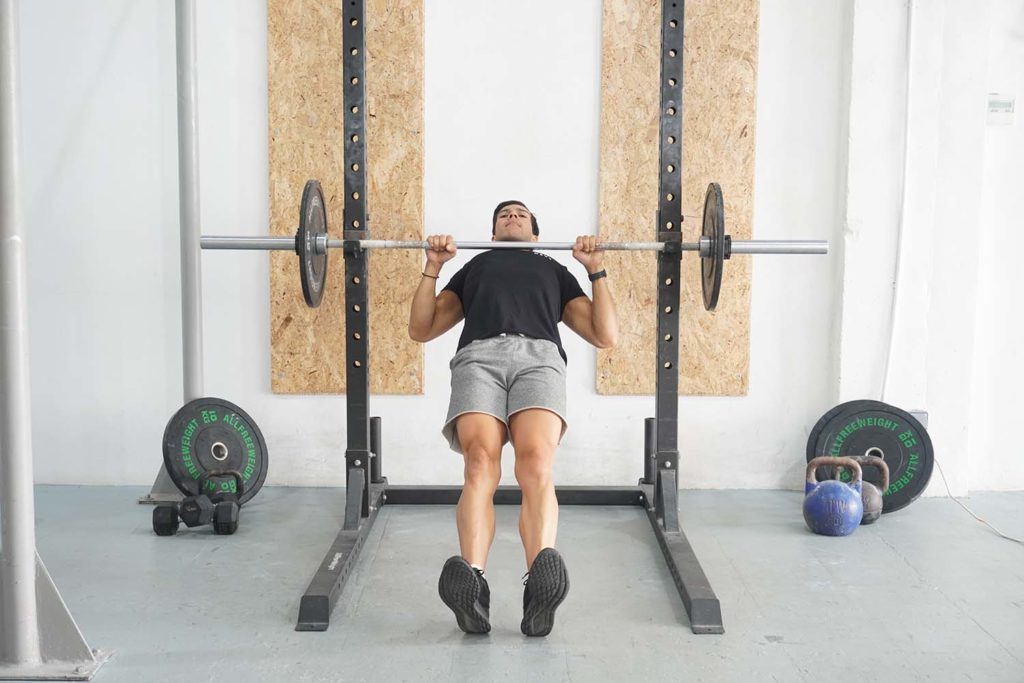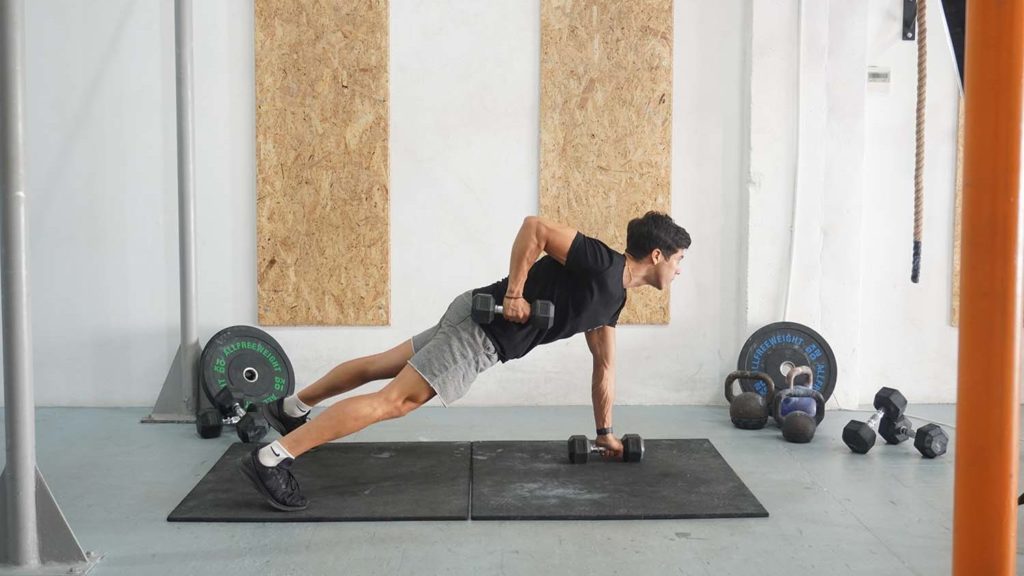What is the Gironda Sternum Pull up?
The Gironda sternum pull-up is a great bodyweight activity that strengthens your entire back. Like any other pull-up, the objective is to pull your body up on a bar. But, sternum pull-ups require you to look up and lean back more, touching the bar with your lower chest at the top. Because of that, the pull-up variation trains your entire back more effectively.
Aside from developing adequate pulling strength, an effective sternum pull-up is about proper scapular retraction. You must strengthen your lats, rhomboids, and trapezius, which would allow you to retract effectively and lean back enough for sternum pull-ups.
One option is to hang from a bar and perform scapular retractions. Begin in a neutral position and engage your back to retract your shoulders. Doing so would lift your body an inch or two without bending your elbows. Relax, take another breath, and retract your shoulders again. We recommend doing sternum pull-ups early in your training, preferably first while you’re at your strongest.
How to do a Sternum Pull Up

- Stand underneath a pull-up bar, reach up, and grab it with an even, overhand grip (palms facing forward). Your hands should be shoulder-width apart or slightly more.
- Bring your shoulders back, engage your abs, and squeeze your glutes.
- Take a breath and pull yourself up. Bring your shoulder blades as far back as your strength and mobility allow as you go up.
- Keep your midsection engaged and lean your torso back.
- Pull yourself up until your lower chest reaches the bar and hold the top position for a moment.
- Lower yourself with control and exhale on the way down.
- Take another breath and repeat.
What muscles does the Gironda sternum pull up activate?
The primary muscle that works during the Gironda sternum pull-up is the latissimus dorsi (lats). Our lats are the largest muscle in the upper body and cover a significant percentage of the upper and middle back (1). The muscle group originates from the lower back and scapula and inserts into the humerus. As such, the muscle plays a vital role in numerous activities, including pulling, retracting our shoulder blades, and providing torso stability.
Our trapezius is the second primary muscle group involved in sternum pull-ups. The muscle covers the upper and middle back, producing force to create shoulder retraction, keep us in an upright position, and more (2).
Other upper back muscles, including the rhomboids, infraspinatus, and erector spinae, also contribute to sternum pull-ups and synergize with the lats and trapezius. Similarly, midsection muscles, including the rectus abdominis, transverse abdominis, and obliques, flex isometrically to offer torso support.
The biceps, brachialis, and brachioradialis also play a role during sternum pull-ups. Their primary functions are to support our grip on the bar and produce elbow flexion as we pull ourselves up.
Tradtional Pull Up Vs Gironda Sternum Pull Up
Traditional and Gironda sternum pull-ups are similar in some ways. Both exercises train many of the same muscles, their range of motion is identical, and you need a pull-up bar to perform them. But, as discussed above, sternum pull-ups require greater shoulder retraction and torso lean. Doing so allows you to get your lower chest in contact with the bar at the top position. In contrast, traditional pull-ups are more of an ‘up and down’ exercise.
Sternum pull-ups are more challenging than traditional pull-ups because the movement requires greater back strength. You’re not only pulling yourself up but are also leaning back, forcing all of the muscles in your back and midsection to work harder.
A significant benefit of sternum pull-ups is that each repetition is more beneficial, and the exercise allows you to train a more significant percentage of your upper back muscles. As such, the movement brings more athleticism, strength, and balance.
Regular pull-ups are also great, especially for people who cannot do the more advanced exercise. They also strengthen your back, improve grip strength, and develop your biceps (3). Plus, your core muscles work hard to keep you from swinging back and forth.
Variations and Modifications of the Gironda Sternum Pull up
1. Banded Gironda Sternum Pull-Up
Banded Gironda sternum pull-ups are a useful variation you can perform to build the necessary strength for the exercise. Hang a looped band from the pull-up bar, place your knees or feet over it, and begin doing pull-ups. The resistance from the band will take away some of your body weight, making each repetition easier.
2. Gironda Sternum Chin-Ups
The chin-up version of the movement is slightly more bicep-focused. Instead of using an overhand grip, your palms face back.
3. Hanging Scapular Retractions
Hanging scapular retractions are a simple and beginner-friendly exercise that strengthens your back and teaches you to engage these muscles more effectively. The objective is to hang with your back neutral, engage your midsection and retract your shoulder blades as much as you can.
Mistakes to Avoid
The most common mistake with sternum pull-ups is not leaning back enough. Many trainees set off to perform sternum pull-ups but only manage to do the regular exercise with a slightly exaggerated back arch. Doing so isn’t bad because all types of pull-ups are good for strength and muscle growth, but it’s vital to pull yourself up as high as you can and lean back as you do. That way, you can gradually work up to your first sternum pull-up and build from there. You can also make the movement more accessible by performing sternum chin-ups (palms facing back).
Another mistake with sternum pull-ups is swinging back and forth as you do repetitions. As with regular pull-ups, not being able to control your body tends to come from weak core muscles. Aside from practicing the exercise regularly, doing some core-specific movements might help. Good examples include planks, reverse planks, hanging knee raises, decline crunches, and cable woodchoppers.
The third mistake with sternum pull-ups is using too much momentum to perform the exercise. Aside from placing significant stress on your joints and connective tissues, doing so prevents you from training and strengthening the correct muscles. It’s much better to do the exercise slowly, even if that means getting fewer repetitions on each set.
Similar Exercises to the Gironda Sternum Pull up
Inverted Row

Inverted rows are a fantastic back-building exercise (4). The objective is to grab a horizontal bar, keep your feet on the floor, lean back, and pull yourself. Similar to a pull-up, you’re using your pulling muscles to bring yourself to the bar before going back to the starting position. You can modify the difficulty of inverted rows by changing your body’s position. Being more upright makes the inverted row easier, whereas leaning back forces you to lift a larger percentage of your weight.
Renegade Row

Renegade rows are an effective exercise that strengthens your core and works your back. The objective is to assume a push-up position while supporting yourself on a pair of hexagonal dumbbells. You then have to tilt to one side, support yourself on that arm, and row the opposite dumbbell.

